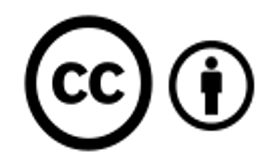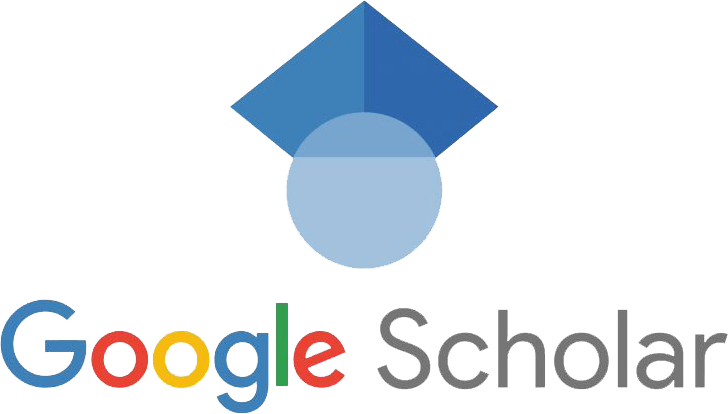Agile 2 Maturity Model - A2MM
Palabras clave:
modelo de madurez ágil, adopción ágil, transformación ágil, marco ágil, Agile 2Resumen
El mundo demanda cada vez mayor adaptación a los cambios rápidos y desafiantes que se están presentando, por lo que se ha evidenciado un crecimiento significativo en la adopción ágil en diferentes sectores y áreas de la organización para responder a estos cambios; sin embargo, las organizaciones presentan retos y desafíos para adoptarlos. Se ha identificado que la causa raíz radica en la baja comprensión del cambio organizacional requerido, razón por la cual se percibe la oportunidad de diseñar un modelo de madurez ágil, diferenciador y singular, considerando los gaps identificados en el análisis y revisión de los existentes y en la iteración de Agile denominada Agile 2.
Nuestro objetivo es que A2MM permita a las organizaciones identificar un punto de arranque en la gestión del cambio y aumentar la comprensión respecto a la adecuación requerida para la adopción del mindset y que, a su vez, influya en la probabilidad de éxito de los proyectos con estos marcos.
Descargas
Referencias
Aghina, W., Ahlback, K., De Smet, A., Lackey, G., Lurie, M., Murarka, M., & Handscomb, C. (2018, 22 de enero). www.mckinsey.com. Obtenido de Los 5 rasgos distintivos de las organizaciones ágiles. https://www.mckinsey.com/business-functions/people-and-organizational-performance/our-insights/the-five-trademarks-of-agile-organizations/es-es.
Agile Leadership School (consultado el 9 de febrero de 2022). Agile Leadership School. Obtenido de Agile Maturity Model: https://agileleadershipschool.nl/agile-maturity-model/.
Aiken, L. (1980). Content validity and reliability of single items or questionnaires. Educational and Psychological Measurement, 955-959.
Ambler, S. (2010). The Agile Maturity Model (AMM). Obtenido de Dr. Dobb’s: http://www.drdobbs.com/architecture-and-design/the-agile-maturity-model-amm/224201005.
Autores del Manifiesto ágil (2001). Manifiesto por el desarrollo ágil de software. Obtenido de https://agilemanifesto.org/iso/es/manifesto.html.
Benefield, R. (2010). Seven dimensions of Agile maturity in the global enterprise: a case study. Proceedings of the 43rd Hawaii International Conference on System Sciences (pp. 1-7). Honolulu.
benjaGarrido (2019, 22 de mayo de 2019). benjaGarrido. Obtenido de SAFe en español: Configuraciones: https://benjagarrido.com/safe-en-espanol-configuraciones/.
Buglione, L. (2011). Light Maturity Models (LMM): an Agile application. ACM, 57-61.
Burgan, S., & Burgan, D. (2014). One size does not fit all: choosing the right project approach. Paper presented at PMI® Global Congress 2014. Newtown Square: Project Management Institute.
Cea D’Ancona, M. (2001). Metodología cuantitativa: estrategias y técnicas de investigación social. Madrid: Editorial Síntesis S.A.
CertiProf (2021). Agile Adoption Report 2021.
Claros Liendo, A. (2015). https://projectools.wordpress.com/. Obtenido de https://projectools.wordpress.com/modelos-de-madurez-en-gestion-de-proyectos/.
Concha, S. (2019, 1. de agosto). PMI Santiago Chile Chapter. Obtenido de ¿Qué tan preparadas están nuestras organizaciones para la agilidad? http://www.pmi.cl/pmi/que-tan-preparadas-estan-nuestras-organizaciones-para-la-agilidad/.
Cox, A. (2021, 13 de enero). Netmind. Obtenido de A simple guide to assess your Agile maturity level. https://netmind.net/en/a-simple-guide-to-assess-your-agile-maturity-level/.
Cruz, M., & Martínez, M. (2018). Origen y desarrollo de un índice de competencia experta: el coeficiente K. Revista Latinoamericana de Metodología de la Investigación Social, 40-56.
Cunningham, L. (2020). Eight reasons why Agile projects fail. Obtenido de https://www.agilealliance.org/8-reasons-why-agile-projects-fail/.
Digital.ai (2021). 15th State of Agile Report.
Escobar-Pérez, J., & Cuervo-Martínez, Á. (2008). Validez de contenido y juicio de expertos: una aproximación a su utilización. Avances en Medición, 27-36.
Fontana, R., Fontana, I., Da Rosa Garbuio, P., Reinehr, S., & Malucelli, A. (2014). Processes versus people: how should Agile software development maturity be defined? The Journal of Systems and Software, 140-155.
Fontana, R., Meyer, V., Reinehr, S., & Malucelli, A. (2015). Progressive outcomes: a framework for maturing in Agile software development. The Journal of Systems and Software, 88-108.
Fontana, R., Reinehr, S., & Malucelli, A. (2014). Maturing in Agile: what is it about? Springer International Publishing, 94-109.
Gren, L., Torkar, R., & Feldt, R. (2015). The prospects of a quantitative measurement of Agility: a validation study on an Agile Maturity Model. The Journal of Systems and Software, 38-49.
Gutiérrez Pacheco, G. (2021). Gerencia fundamental de proyecto. Módulo 2: Iniciación, plan de gerencia del proyecto y planeación del alcance. Bogotá.
Henriques, V., & Tanner, M. (2017). A systematic literature review of Agile and maturity model research. Interdisciplinary Journal of Information, Knowledge and Management.
Hernández Sampieri, R., Fernández Collado, C., & Baptista Lucio, M. (2014). Metodología de la investigación (6ª ed.). México, D.F.: McGraw Hill.
Hernández, J. (2019, 4 de diciembre). Agile experience. Obtenido de Marcos de escalado ágil. https://agileexperience.es/2019/12/04/marcos-de-escalado-agil/.
Humble, J., & Russell, R. (2009). The Agile Maturity Model applied to building and a releasing software. Thought Works.
Indeed Editorial Team (2022, 14 de febrero). https://www.indeed.com/. Obtenido de Guide to Building an Agile Maturity Model. https://www.indeed.com/career-advice/career-development/agile-maturity-model.
IPMA (2018). IPMA Reference Guide ICB4 in an Agile World.
Jakobsen, C., & Johnson, K. (2008). Mature Agile with a twist of CMMI. Agile 2008 Conference (pp. 212-217). IEEE.
Knowledge21 (2019, 26 de diciembre). K21. Obtenido de El Radar Ágil y sus criterios: un diagnóstico de la agilidad en tu equipo. https://k21.global/es/blog/radar-agil-criterios-diagnostico-agilidad-equipo.
Lander, A., Berg, C., Landry, H., Cagle, K., Chirravuri, L., Cooney, L., . . . Harris, V. (2021). Agile 2. The next iteration of Agile. Obtenido de The Case for Agile 2. https://agile2.net/how-we-got-here/the-case-for-agile-2/.
López-González, B. (s.f.). Modelos de madurez en la administración de proyectos. UCI.
Lui, K., & Chan, K. (2005). A road map for implementing extreme programming. Unifying the Software Process Spectrum; International Software Process Workshop (vol. 3840, pp. 474-481). Beijing.
Maier, A., Moultrie, J., & Clarkson, J. (2012). Assessing organizational capabilities: reviewing and guiding the development of maturity grids. IEEE Transactions on Engineering Management, 138-159.
McKinsey & Company (2020, 20 de marzo). McKinsey.com. Obtenido de https://www.mckinsey.com/business-functions/people-and-organizational-performance/our-insights/enterprise-agility-buzz-or-business-impact.
Miller, G. (2013). Agile problems, challenges & failures. Paper presented at PMI® Global Congress. New Orleans: Project Management Institute.
Morales, M. (2018, 29 de mayo). ¿Cuál es la diferencia entre “enfoque tradicional para la gestión de un proyecto” y “gestión estratégica del proyecto”? Obtenido de Quora. https://es.quora.com/Cu%C3%A1l-es-la-diferencia-entre-enfoque-tradicional-para-la-gesti%C3%B3n-de-un-proyecto-y-gesti%C3%B3n-estrat%C3%A9gica-del-proyecto.
Nawrocki, J., Walter, B., & Wojciechowski, A. (2001). Toward maturity model for extreme programming. IEEE, 233-239.
Nurdiani, I., Börstler, J., Fricker, S., Petersen, K., & Chatzipetrou, P. (2019). Understanding the order of Agile practice introduction: comparing Agile Maturity Models and practitioners’ experience. The Journal of Systems and Software, 1-20.
Packlick, J. (2007). The Agile Maturity Map a goal Oriented Approach to Agile Improvement. Agile Conference 2007, (págs. 266-271).
Patel, C., & Ramachandran, M. (2009). Agile maturity model (AMM): a software process improvement framework for Agile software development practices. International Journal of Software Engineering, 3-28.
Project Management Institute (2017). Pulse of the Profession® 2017.
Project Management Institute (2021). Estándar para la Dirección de Proyectos y Guía de los Fundamentos para la Dirección de Proyectos. Guía del PMBOK. (7ª ed.). Pennsylvania: Project Management Institute.
Project Management Institute (2021). Pulse of the Profession® 2021.
Project Management Institute y Agile Alliance (2017). Guía práctica de Agile. Pennsylvania.
Project Management Research Institute (consultado el 9 de febrero de 2022). Project Management Research Institute. Obtenido de Enterprise Agility. https://pmri.in/enterprise-agility/.
Qumer, A., & Henderson-Sellers, B. (2008). A framework to support the evaluation, adoption and improvement of Agile methods in practice. The Journal of Systems and Software, 1899-1919.
Reainthong, T. (2020, 16 de febrero). Project Management. Obtenido de Scaled Agile Framework (SAFe). https://www.projectmanagement.com/contentPages/wiki.cfm?ID=312951&thisPageURL=/wikis/312951/Scaled-Agile-Framework--SAFe-#_=_.
Rigby, D., Elk, S., & Berez, S. (2020). Doing Agile right: transformation without chaos. Boston: Harvard Business Review Press.
Robles Pastor, B. (2018). Índice de validez de contenido: coeficiente V de Aiken. Pueblo Continente, 193-197.
Rummler, G., & Brache, A. (1990). Improving performance: how to manage the white space on the organization chart. San Francisco, CA: Jossey-Bass Publishers.
Serna, N. (2021). Marco de trabajo para lograr la agilidad organizacional de las compañías, mejorando su capacidad de respuesta para la innovación en entornos VUCA. Medellín: Universidad Eafit.
Shankarmani, R., Mantha, S., Pawar, R., & Babu, V. (2012). Agile methodology adoption: benefits and constraints. International Journal of Computer Applications.
Sidky, A., Arthur, J., & Bohner, S. (2007). A disciplined approach to adopting Agile practices: the Agile adoption framework. Innovations in Systems and Software Engineering, 203-216.
Smet, A., Lurie, M., & George, A. (2018, 1º de octubre). Leading Agile transformation: the new capabilities leaders need to build 21st-century organizations. Obtenido de McKinsey & Company. https://www.mckinsey.com/business-functions/people-and-organizational-performance/our-insights/leading-agile-transformation-the-new-capabilities-leaders-need-to-build-21st-century-organizations.
Solarte Pazos, L., & Sánchez Arias, L. (2014). Gerencia de proyectos y estrategia organizacional: el modelo de madurez en gestión de proyectos CP3M© V5.0. Innovar, 5-18.
Stachowiak, A., & Mazur, A. (2017). Implementation of the Model of Maturity to Agility Assessment. Topics in Economics, Business and Management, 339-342.
Stachowiak, A., & Oleśków-Szłapka, J. (2018). Agility capability maturity framework. 28th International Conference on Flexible Automation and Intelligent Manufacturing (FAIM2018) (pp. 603-610). Columbus: Procedia Manufacturing.
Sutherland, J. (2001). Agile can scale: inventing and reinventing Scrum in five companies. Cutter IT Journal, 5-11.
The Standish Group Report (2020). Chaos Report.
Trisoglio, R. (2021, 22 de julio). Agilidad empresarial (T. Rheinland, entrevistador)
Tuncel, D., Körner, C., & Plösch, R. (2020). Comparison of Agile Maturity Models: reflecting the real needs. 46th Euromicro Conference on Software Engineering and Advanced Applications (SEAA) (pp. 51-58).
Valencia, F., Vega, J., & Barrientos, A. (2022). Modelo de madurez ágil para empresas del sector bancario. Memorias de la Decimosegunda Conferencia Iberoamericana de Complejidad, Informática y Cibernética (Cicic 2022) (pp. 201-205). International Institute of Informatics and Cybernetics.
VersionOne (2013). 7th Annual State of Agile Development Survey.
Verwijs, C. (2019, 25 de abril). Scrum.org. Obtenido de Here’s what’s wrong with maturity models. https://www.scrum.org/resources/blog/heres-whats-wrong-maturity-models.
Wendler, R. (2012). The maturity of maturity model research: a systematic mapping study. Information and Software Technology, 1317-1339.
Williams, L., Rubin, K., & Cohn, M. (2010). Driving process improvement via comparative Agility assessment. Agile’10: Proceedings of the 2010 Agile Conference (pp. 3-10). IEEE.
Wolpers, S. (2017). Agile maturity: fad, trend or Holy Grail? Hands-on Agile #4 (págs. 1-39). Berlin: AgeOfProduct.
Yin, A., Figueiredo, S., & Silva, M. (2011). Scrum maturity model: validation for IT organizations’ roadmap to develop software centered on the client role. ICSEA, 20-29.
Zartha, J., Montes, J., Toro, I., & Villada, H. (2014, 2 de octubre). Método Delphi. Propuesta para el cálculo del número de expertos en un estudio Delphi sobre empaques biodegradables al 2032. Revista Espacios, 10. Obtenido de Método Delphi. Propuesta para el cálculo del número de expertos en un estudio Delphi sobre empaques biodegradables al 2032.
Descargas
Publicado
Número
Sección
Licencia

La revista Investigación en Desarrollo y Gerencia Integral de Proyectos está licenciada bajo una Creative Commons Attribution, que permite a otros compartir el trabajo con un reconocimiento de la autoría y la publicación inicial en esta revista.
Los autores de los artículos seleccionados deberán autorizar su publiación en la Revista en Investigación en Desarrollo y Gerencia Integral de Proyectos, que se reserva el derecho a hacerlo en la versión final.








